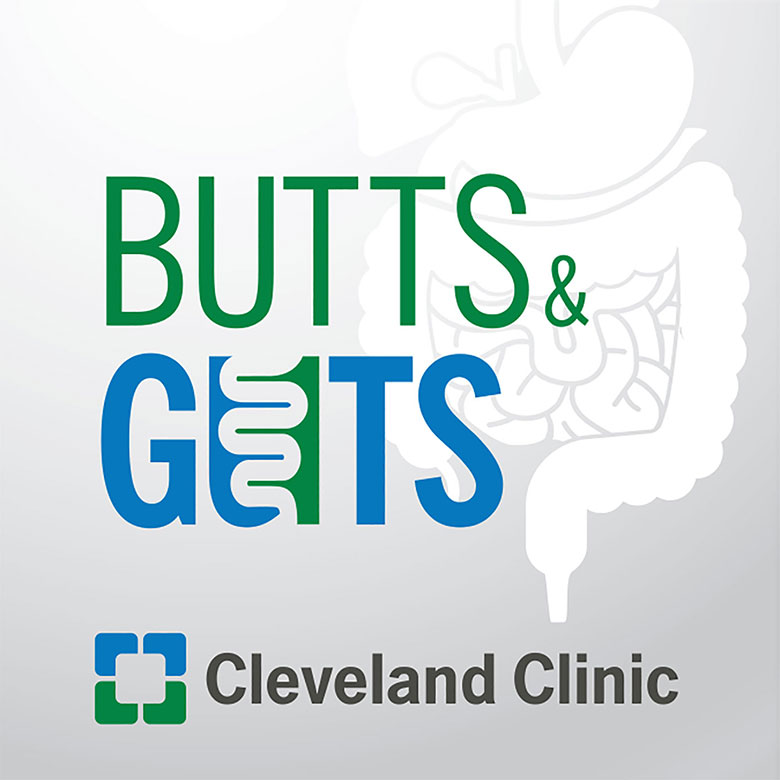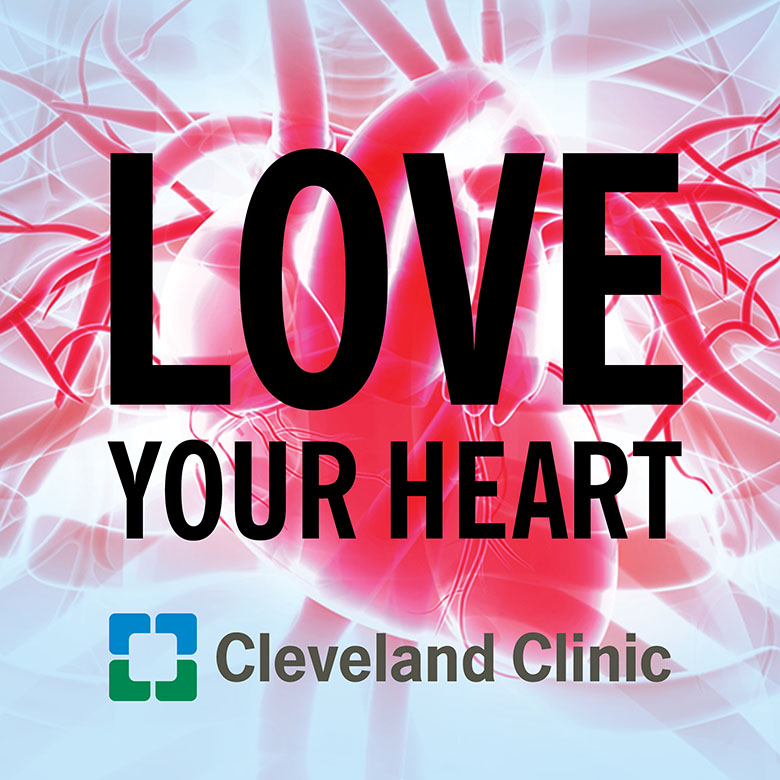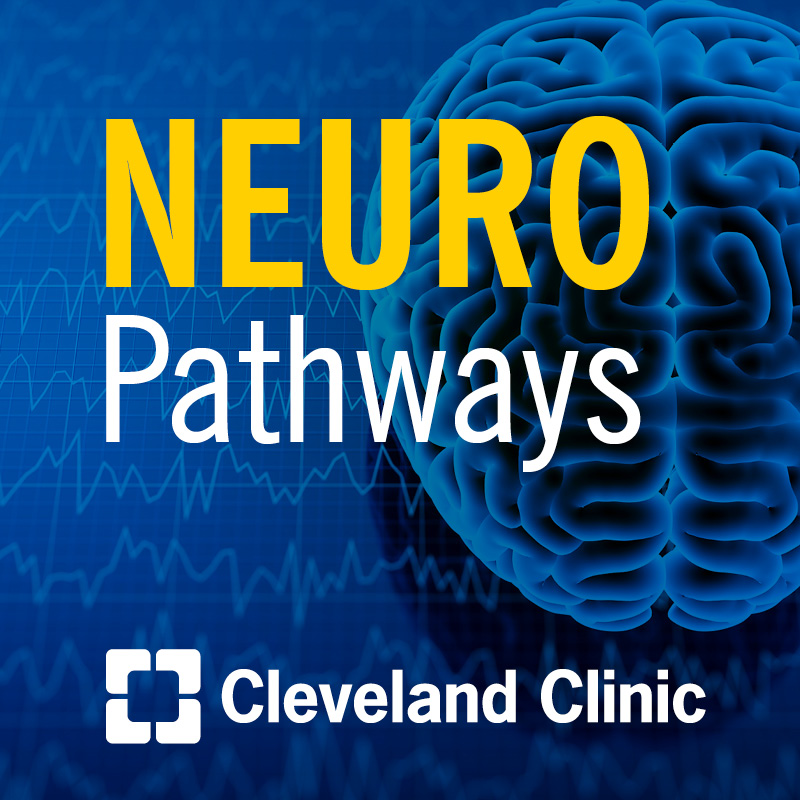What Do You Know About Celiac Disease? with Claire Jansson-Knodell, MD
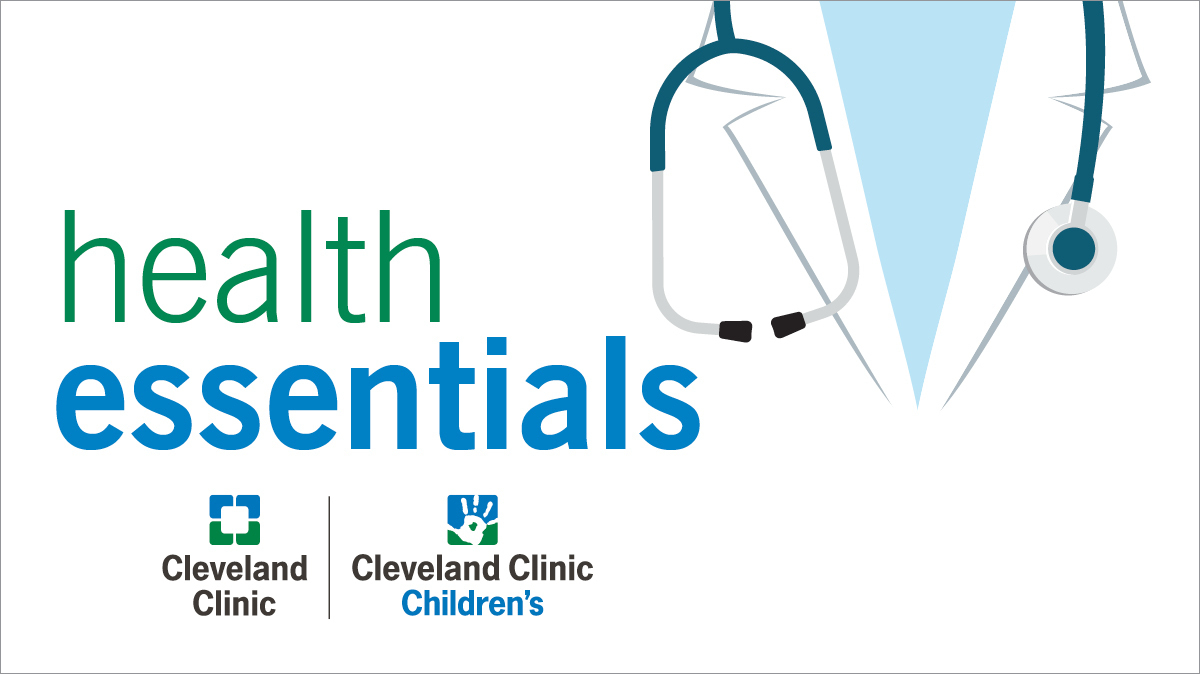
Subscribe: Apple Podcasts | Podcast Addict | Spotify | Buzzsprout
What Do You Know About Celiac Disease? with Claire Jansson-Knodell, MD
Podcast Transcript
John Horton:
Hey there, and welcome to another Health Essentials Podcast. I'm John Horton, your host.
Many of us have heard of celiac disease and might even know that it involves issues with eating food with gluten. Beyond that, though, awareness and understanding of the condition aren't exactly robust. In fact, surveys have shown that only about 50% of us know anything about celiac disease. Today, we're going to try to bump up that number with the help of gastroenterologist Claire Jansson-Knodell. She's one of the many experts at Cleveland Clinic who visit our weekly podcast to help us better understand how our bodies work. Now, let's get started on a little Celiac 101. We have a lot to cover.
Welcome to the podcast, Dr. Jansson-Knodell. Thanks for coming on to chat about celiac disease, a topic that really needs some attention.
Dr. Claire Jansson-Knodell:
Happy to be here today, talking about one of my favorite topics in medicine.
John Horton:
Well, funny you should mention that, because before we get started, I have to ask you to share how you became interested in celiac disease. And I heard you talk about this once, and it is the only story I've ever heard where somebody is that excited about the small intestine.
Dr. Claire Jansson-Knodell:
Well, it all started when I was an undergraduate. I took a course in electron microscopy. We used these high-tech microscopes and we looked at different organ systems in the lab. And on the first day of class, everyone was assigned a random organ from the professor. So he was going around the room, and the person next to me got the heart, person on the other side got the liver. I was given the small intestine, and I thought it was the coolest thing I had ever seen. And I really liked how the structure mimicked the function that we see in our body. And I was really fascinated about it from that point in time on. And it describes kind of how I got interested in gastroenterology to begin with.
John Horton:
Well, it is fabulous that there are people who get that excited about the small intestine because somebody needs to give it some love, I suppose, so we can figure out some of these conditions and diseases. So now that we know a little bit more about you and how you got into this, let's start learning more about celiac disease itself. And for starters, what is it and what does it do to your body?
Dr. Claire Jansson-Knodell:
The technical definition for celiac disease is an “immune-mediated enteropathy” or disease of the small intestine that occurs in genetically susceptible individuals after ingestion of dietary gluten.
John Horton:
That's a lot. So what-
Dr. Claire Jansson-Knodell:
…that's a lot.
John Horton:
OK, so it sounds like it's an autoimmune condition.
Dr. Claire Jansson-Knodell:
It's pretty complicated. It is an autoimmune disease. But maybe we could use an analogy to talk a little bit more about what celiac disease means and how an autoimmune disease works.
John Horton:
OK, hit us with it.
Dr. Claire Jansson-Knodell:
So imagine your body is like a castle and your small intestine is like the castle walls. These castle walls let important visitors into the castle. So things like nutrients, things like vitamins, proteins, stuff that your body needs to stay strong. When you eat your food, it goes into the castle walls, where the gates and the guards decide who can come in. And think of your immune system as the guards for this castle, and their job is to protect you. Now, let's say you eat something like gluten. In most people, gluten walks up to the gates of the castle, gets checked out by the guards, and it heads right into the castle. No problem, nothing bad happens. You get those nutrients that you need from the gluten protein.
But in someone with celiac disease, gluten is instead treated like an intruder to the castle.
So here's what happens step by step… Gluten knocks on the gates of the castle. It enters your small intestine. The guards take a look and think that gluten is an intruder instead of a nutritious visitor. And the guards launch an attack to stop the gluten. And here's the big mistake — the guards, your immune system, miss the gluten, and instead, damage the castle walls, your small intestine instead.
John Horton:
That is a wonderful-
Dr. Claire Jansson-Knodell:
…does that analogy make sense?
John Horton:
Yeah, it totally breaks it down. So basically, you've got, like you said, this gluten kind of comes in and your body just, it overreacts to it and goes into attack mode. And while it's in attack mode, it's shooting like stormtroopers from Star Wars. It's not hitting anything that it wants to, but it's doing damage to everything around it.
Dr. Claire Jansson-Knodell:
Correct. In celiac disease, gluten shows up at the gates of your body, your immune system overreacts and ends up damaging your own small intestine, making it hard to get the good stuff you need from food and it makes you feel sick.
John Horton:
And that's what I want to break down. So the damage to your small intestine, I mean, we say “damage,” it can mean so many different things — is the damage basically that it makes it so it can't do its job as well, which is to kind of absorb those nutrients and get them into your body?
Dr. Claire Jansson-Knodell:
Correct. So what happens in celiac disease is, gluten causes villous atrophy — or these finger-like projections in your small intestine to become flat. And this really decreases the surface area that you have to absorb the nutrients. So if you think of the small intestine with these finger-like projections, these villi, instead of having all this area to absorb, they become flat in celiac disease. And now you only have this.
John Horton:
So basically, it's reducing the area you have to take those nutrients in. So it just kind of cuts down on what your max input would be, I guess.
Dr. Claire Jansson-Knodell:
Correct.
John Horton:
Now, if you have this autoimmune disorder, is this something that you inherit, that you pick up, that just randomly happens? How do you get it?
Dr. Claire Jansson-Knodell:
That's a tricky question. Celiac disease can occur at any age or any stage in life. But there are two things that we know that a person has to have in order to develop celiac disease. One is the genetics to develop the immune reaction, and two is, you have to be eating gluten in order to have this response.
John Horton:
So in the genetic part, then, it sounds like this is something that you're born with. To use your analogy, those guards at the gate aren't going to have it all figured out. We know that they've got this misinformation programmed into them, but it's just a matter of when they realize that.
Dr. Claire Jansson-Knodell:
Correct. If we want to take the castle analogy even a step further, we could say that we know that someone has to have these genetics to develop celiac disease, which is DQ2 or DQ8. And about 30% of people walking around have DQ2 or DQ8, which allows for the development of celiac disease. But if we put genetics into that castle analogy, you can think that people with DQ2 or DQ8 have a special version of a security guard manual. And a smaller portion of those people, like 1 in 30, who had this manual, their manual says, "Gluten is a threat. Attack." And most castles have normal manuals that say, "Gluten's fine, let it pass." But these 30% of people with DQ2 or DQ8, their manual says, "Gluten might be a threat. Be careful, be suspicious of these guys."
John Horton:
Yeah, because I was going to say, because 30% of people don't have it, so the 30% of people carry the potential to have it. But it sounds like only a small percentage of that group actually will have their body respond in that way where you end up with the issues.
Dr. Claire Jansson-Knodell:
John, that's exactly right. And we don't totally know why that occurs. This is an area of ongoing research for physicians and scientists studying celiac disease. We'd really like to know what that trigger is that pushes people who have the genetic possibility over the edge into developing celiac disease.
John Horton:
Well, the one thing I've learned doing this podcast is the body is a wild place, and we're still figuring out so much of what happens in it.
Dr. Claire Jansson-Knodell:
True.
John Horton:
So when you look at, then, celiac … so you're born with this gene, and then it sounds like there's just something that comes along that might trigger it at some point in your life, but you don't know what it is, when it could happen, or any of that.
Dr. Claire Jansson-Knodell:
Exactly. So we're super clear on the two requirements for celiac disease — genetics and gluten intake.
John Horton:
And it sounds like even with the genetics, there's even a heightened requirement, which is your system has got to-
Dr. Claire Jansson-Knodell:
…some sort of trigger.
John Horton:
Look at it, look at it funny, go, "Hey, wait a minute, you're trying to get in here, you're not allowed."
Dr. Claire Jansson-Knodell:
And there's likely some environmental component that we haven't quite figured out yet. Maybe this is viral or bacterial infections, maybe it's wheat processing, the amount of wheat intake, the timing of gluten introduction in childhood, for example, antibiotic exposure — these are all areas that are being explored as potential triggers.
John Horton:
So you just don't know what might set it off. But the odds are 1 out of 3 of us have that kind of programmed in. It's just a matter of if it gets activated.
Dr. Claire Jansson-Knodell:
Correct. That's a good way to think about it.
John Horton:
Wow. And a lot of people, it sounds like, do develop this later in life, or I guess, if they develop it, they develop it later in life. So it sounds like it's one of those things that can happen … what … when you're in your 20s, 30s, 50s, say for instance? I mean, could it happen at any point?
Dr. Claire Jansson-Knodell:
Celiac disease can occur at any age or stage in life. I've even diagnosed people in their 70s and 80s with celiac disease.
John Horton:
That has got to be very, very difficult. If you've gone your entire life eating freely and then all of a sudden, you cannot eat anything with gluten. That's got to be tough.
Dr. Claire Jansson-Knodell:
I think there are particular ages that are extra challenging from a celiac disease management and a gluten-free diet standpoint. And I would say that one subgroup is my older patients, my more mature patients, you could say, who have been eating a certain way their entire life. And then I'm telling them that they have to change this entirely, otherwise their small intestine is going to be damaged and they could have systemic effects from it.
John Horton:
Yeah, wow. And that's not to minimize what it is at any stage because I'd imagine working around gluten has got to be difficult at any age. Just when you look at the food that's all around us, at restaurants and at the store, normal kitchens, like what you're making every day — it's in a lot.
Dr. Claire Jansson-Knodell:
It absolutely is. I mean, it's easy to pick it out in terms of certain grains and thinking about it, bread, pasta, pizza, that type of thing. But gluten is in so much more than that. And that's why we really need the help of an expert dietitian who's knowledgeable in a gluten-free diet to help educate and guide our patients about the less common sources of gluten out there.
John Horton:
And let's just — because I know this is something that comes up all the time and we use the term “gluten” so freely — if you could just walk us through what exactly gluten is and kind of the sort of grains where you usually see it.
Dr. Claire Jansson-Knodell:
Definitely. So gluten is a storage protein that's found in wheat, barley and rye. And it's responsible for giving dough its kind of elastic or stretchy texture.
John Horton:
So you're going to see it … most baked goods, breads, I mean, you said pizza dough. I mean, it's in a lot.
Dr. Claire Jansson-Knodell:
All of these things and so much more. It's in lunch and deli meats. It's used as a thickener in sauces, gravy, salad dressings. There's even gluten in household items.
John Horton:
Oh, wow. That is not ... see, I'm just thinking, breads and whatever. I did not realize it could be in all of that, all those other things, too! That really does make things pretty complicated.
Dr. Claire Jansson-Knodell:
It does. Because it could be used as part of the coating in pills or medications or supplements, it can also be in ChapStick®, as well as things, like beer or beverages and licorice, interestingly.
John Horton:
Wow. Well, to be honest, I could do without the licorice; the beer might be a little tough, but I could live without the licorice for a while.
Dr. Claire Jansson-Knodell:
Every patient has their own challenges of what's really difficult for them to give up.
John Horton:
Now, we've kind of gone over a little bit with how common celiac disease is, but I don't think we really hit on a number. So what percentage of the population is dealing with this?
Dr. Claire Jansson-Knodell:
Celiac disease is found in about 1% of the population across the world.
John Horton:
And that's, like you said, found in, that's where it's active, where those guards are on high alert?
Dr. Claire Jansson-Knodell:
Great question. I guess we can make a distinction here between diagnosed and active.
John Horton:
OK.
Dr. Claire Jansson-Knodell:
“Active” definitely means that people have it. If we were to test them, they would have the tissue transglutaminase IgA antibody, which is one of the characteristic celiac disease serology tests. And they would have damage or villous atrophy in their small intestine. But not everyone who has celiac disease knows it because the symptoms can be so variable. Some people may have never even been tested or paid attention to their symptoms to know that they have celiac disease.
John Horton:
All right. Yeah. Let me ask you this, because we've mentioned how celiac disease can just sort of develop, you have it coded in you and then it'll just happen, does it ever deactivate? I mean, do you have people who have celiac disease and then one day, they get up and the guards that we keep talking about, they figure things out and they go, "We were way off with this. We're going to let you go over through now."
Dr. Claire Jansson-Knodell:
Good question. No.
John Horton:
Oh, man.
Dr. Claire Jansson-Knodell:
From [inaudible 00:15:00], it's lifelong. And when you remove gluten, the immune system, the guards stand down, but you have to remove gluten from the diet in order to do that.
John Horton:
That just doesn't seem fair. If it can just randomly appear, it should be able to randomly disappear, too.
Dr. Claire Jansson-Knodell:
That would be great. But it doesn't quite work like that.
John Horton:
No. Well, you could hope.
So if you have celiac disease, what sort of symptoms kind of signal that it's there?
Dr. Claire Jansson-Knodell:
The most classic symptoms of celiac disease are those of malabsorption or damage to the small intestine, meaning diarrhea, weight loss, in children poor growth for example. But there can be all sorts of other symptoms of celiac disease, too.
John Horton:
And I think most people think of classic GI symptoms: gas, bloating, things like that. Are those just outward signs or are there other things that even come with that?
Dr. Claire Jansson-Knodell:
So patients can have any whole range of GI symptoms, from abdominal pain to cramping, nausea, vomiting, even constipation, which seems strange, an illness that we think of as one that causes diarrhea.
John Horton:
It does.
Dr. Claire Jansson-Knodell:
But they can also have extraintestinal symptoms of celiac disease, meaning outside of the GI tract. Things like numbness and tingling, headaches, elevated liver tests, iron-deficiency anemia. All sorts of other body systems can be involved.
John Horton:
Now, everything you just mentioned seemed like pretty noticeable things, and that just makes me wonder how so many people with celiac disease are just never diagnosed with it. I think I saw one study that said about 30% of people have the condition and don't know it. So I mean, how is it overlooked?
Dr. Claire Jansson-Knodell:
That's exactly true. About 30% of people who have celiac disease don't know that they have celiac disease, and that number is getting better over time. I want to be a little bit encouraging about that. And part of that is awareness in the medical community and awareness in the general public. But also, celiac disease is so tricky because it can have such a wide variety of so many different symptoms. When patients are being evaluated, sometimes, celiac disease isn't the first thing that's coming to mind. And in order to test for celiac disease, you have to do two tests.
Sometimes, people see their doctor and start the evaluation and maybe they'll only get one test or maybe they will say, "Hey, I think I figured it out, this might be gluten, so I'm just going to stop eating it and see if I feel better." Or they'll get advice from a friend or a colleague, a family member who says, "Just stop eating gluten and that'll take care of things for you." And in a lot of patients, that does help and that's great, but in order to make a diagnosis and figure out what's going on, we actually need to have the patients continue to eat gluten in order for their testing to be accurate.
John Horton:
And I'd imagine if you do have celiac disease, even if you take gluten out of your diet, it's important to go and see a doctor and kind of track what's going on in your small intestine if you have damage, just to make sure that things are working as efficiently as they possibly can.
Dr. Claire Jansson-Knodell:
Definitely. We like to follow our celiac disease patients over time. There's certain lab work that we do, certain evaluations, additional tests. Sometimes, we need to refer them to other physician specialties or colleagues for certain complications of celiac disease.
John Horton:
Yeah.
Now, are there treatments for celiac beyond just avoiding food with gluten?
Dr. Claire Jansson-Knodell:
Right now, the only treatment we have available is a strict lifelong gluten-free diet. There are a number of pharmacotherapies under investigation, yet a gluten-free diet remains the only effective treatment.
John Horton:
So basically, you just have to dodge it, period. There's no magic pill, shot, anything that's going to somehow undo it.
Dr. Claire Jansson-Knodell:
Celiac disease is really challenging, and that's why we need to partner with our colleagues, the dietitians who have expertise in the gluten-free diet. They're a key member of the care team for our patients with celiac disease because they take on that responsibility of helping educate the patient on what gluten is and how to avoid it.
John Horton:
Now, you went over just so many things that gluten could be in that I would've never thought of. I mean, we all kind of associate it with bread and things like that, but I know you had mentioned it's in, could be in meats and soups, sauces, on and on and on. So given all that, is it really possible to have a truly gluten-free diet?
Dr. Claire Jansson-Knodell:
Absolutely. It is challenging, but many of my patients have succeeded in this. It's hard work, and all I can ask of my patients is that they try their best.
John Horton:
Now, to do it, is this something, and maybe I haven't looked closely enough at labels, but I swear I've never seen just gluten listed on the side. I take it there's a bunch of code words you need to look for to make sure you're not eating food that might have it.
Dr. Claire Jansson-Knodell:
Absolutely. And that is where our dietitian colleagues come in and help our patients figure all of that out and really learn how to read nutrition labels in order to achieve a gluten-free diet.
John Horton:
What are some of the ones that just kind of jump out? The big ones that people need to look at when they're looking at labels, just to avoid foods with those ingredients.
Dr. Claire Jansson-Knodell:
Wheat, wheat starch, dextrin, all sorts of things like that.
John Horton:
All right. So it sounds like there's a whole list that people … you need to be really vigilant when you're buying your groceries just to make sure it's not sneaking in something.
Dr. Claire Jansson-Knodell:
Definitely.
John Horton:
And it sounds like every little bit you get just does a little more damage to your small intestine, and that just really just accumulates over time, and it just really hurts how it works, and it's just not as efficient in your body.
Dr. Claire Jansson-Knodell:
Yeah, it's a tremendous change to make in order to follow a gluten-free diet. And I think we have to be very conscious when we ask our patients to follow the gluten-free diet of what we are challenging them to do.
John Horton:
And I imagine learning that you have celiac disease and then adjusting to a gluten-free diet isn't the easiest thing to do, especially later in life, as you had mentioned. What advice do you give your patients to help them make these changes?
Dr. Claire Jansson-Knodell:
I try to normalize it as much as I can. I remind them that it's a tremendous change to make and that all I can ask is that they do their best, that I'm really proud of them for the work that they have done on it.
The first year is invariably the hardest for people, and after that, it tends to get a bit easier. I'm here to partner with them, and we have the expertise of dietitians who are knowledgeable in a gluten-free diet, who are a part of the team, too. And I think letting them know that that support is available is definitely helpful.
John Horton:
And I'd imagine just kind of talking about it a little more, it has to be helpful, too, because as you mentioned at the start, most people have kind of maybe heard of celiac disease, but don't really understand what it is and that it really requires somebody to avoid eating anything with gluten just because of the long-term damage it can do.
Dr. Claire Jansson-Knodell:
Lack of understanding other people is definitely a challenge. And not everyone knowing what gluten can do to the body in someone who has celiac disease or what exactly has gluten in it, particularly if my patients want to eat out or engage in certain social events or travel, that type of thing, that can make it difficult for them to have celiac disease and to try to do all sorts of things.
John Horton:
Well, I really appreciate you shedding so much light on this and really educating us as to what celiac disease is and really, what it means to live with it. So like I said, thank you again for coming in, and I look forward to having you back.
Dr. Claire Jansson-Knodell:
Sounds great. Happy to be here, John. Thank you.
John Horton:
Thank you.
If someone has celiac disease, they don't choose to adopt a gluten-free diet. It's a necessity for their health and it's something they need to think about whenever they eat or drink. Consider that one of the main takeaways from Celiac 101.
If you liked what you heard today, please hit the subscribe button and leave a comment to share your thoughts. Until next time, be well.
Speaker 3:
Thank you for listening to Health Essentials, brought to you by Cleveland Clinic and Cleveland Clinic Children's. To make sure you never miss an episode, subscribe wherever you get your podcasts or visit clevelandclinic.org/hepodcast. This podcast is for informational purposes only and is not intended to replace the advice of your own physician.
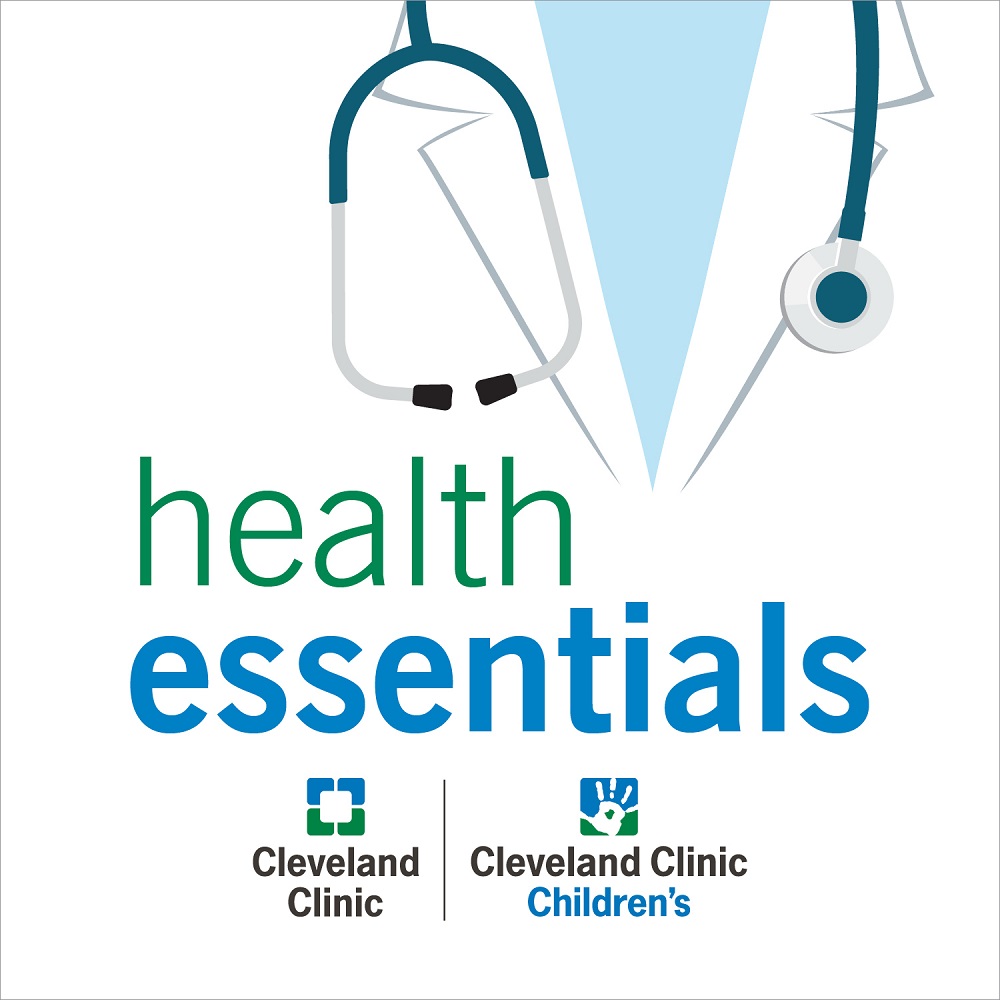
Health Essentials
Tune in for practical health advice from Cleveland Clinic experts. What's really the healthiest diet for you? How can you safely recover after a heart attack? Can you boost your immune system?
Cleveland Clinic is a nonprofit, multispecialty academic medical center that's recognized in the U.S. and throughout the world for its expertise and care. Our experts offer trusted advice on health, wellness and nutrition for the whole family.
Our podcasts are for informational purposes only and should not be relied upon as medical advice. They are not designed to replace a physician's medical assessment and medical judgment. Always consult first with your physician about anything related to your personal health.
